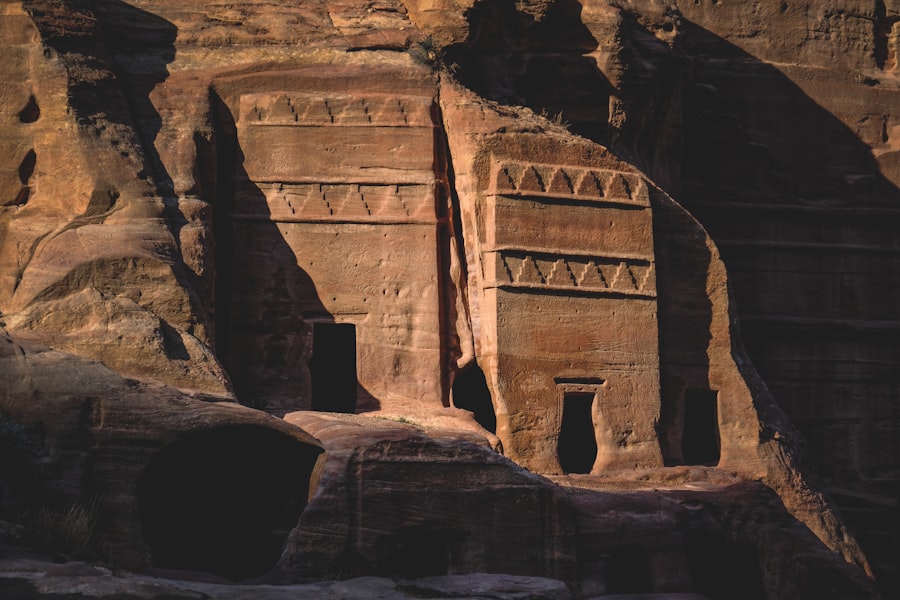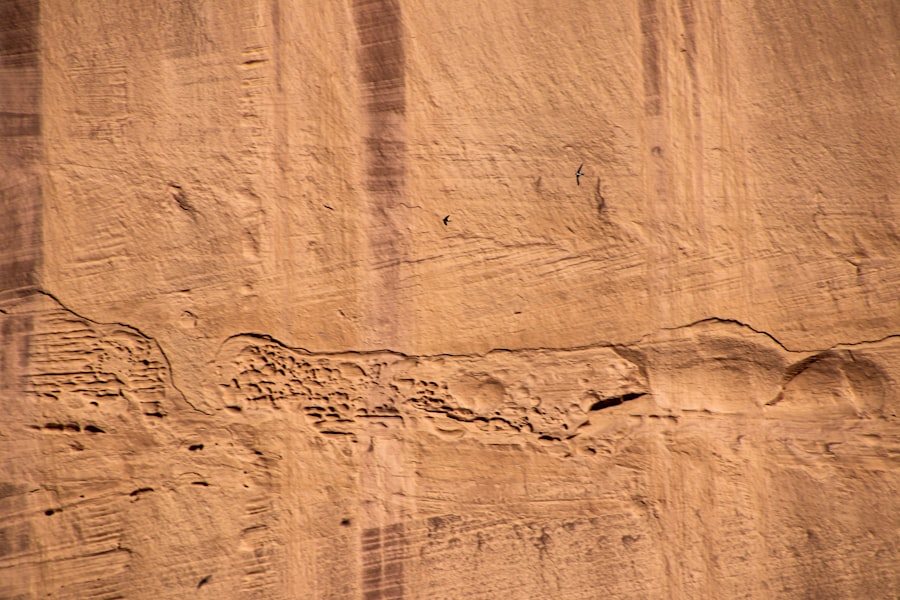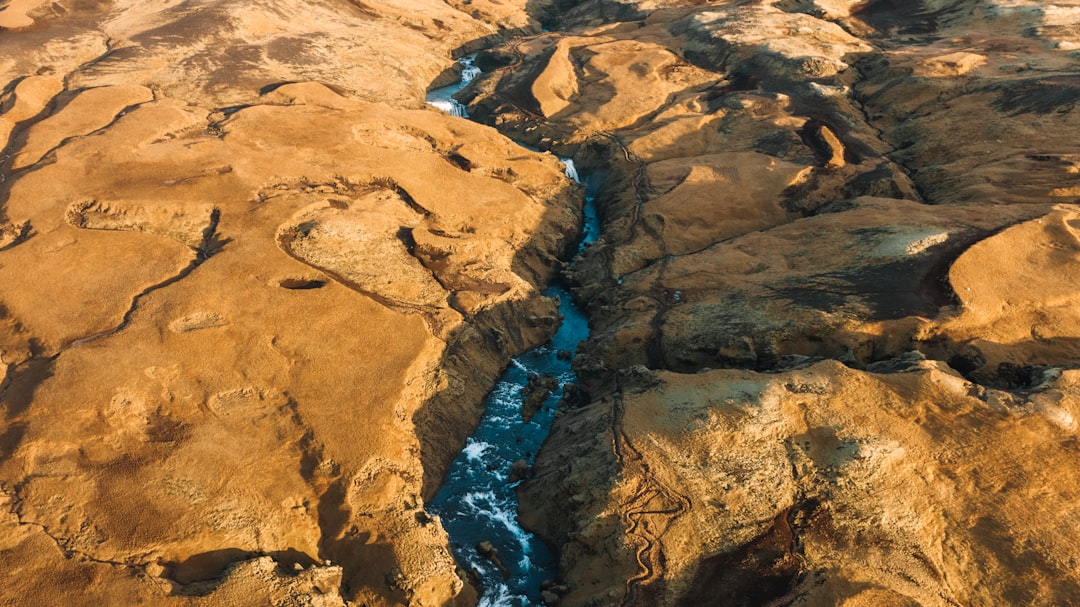The Grand Canyon, a breathtaking natural wonder located in Arizona, is one of the most iconic landscapes in the United States. Carved by the Colorado River over millions of years, this immense chasm stretches approximately 277 miles in length, reaches depths of over a mile, and showcases a stunning array of geological formations. Its vibrant colors and intricate rock layers tell a story of Earth’s history, attracting millions of visitors each year who come to marvel at its grandeur.
The canyon is not only a testament to the power of natural forces but also a site rich in cultural significance, with evidence of human habitation dating back thousands of years. Beyond its geological marvels, the Grand Canyon has long been a focal point for various theories and explorations, including the intriguing notion that ancient civilizations, such as the Egyptians, may have ventured to its depths. This idea, while often dismissed by mainstream historians, has captured the imagination of many and has led to a plethora of discussions regarding the potential connections between ancient cultures across vast distances.
As researchers delve deeper into the mysteries surrounding the Grand Canyon, they uncover layers of history that challenge conventional narratives and invite further exploration into the possibility of ancient Egyptian presence in this remarkable landscape.
Key Takeaways
- The Grand Canyon is a natural wonder and a site of ongoing archaeological exploration.
- There are theories and evidence suggesting that ancient Egyptians may have visited the Americas, including the Grand Canyon.
- Cultural and architectural similarities between ancient Egypt and Native American cultures have sparked interest in potential connections.
- Geological and archaeological discoveries in the Grand Canyon have raised questions about ancient Egyptian presence.
- Modern research continues to explore the possibility of ancient Egyptian visits to the Grand Canyon, sparking ongoing debate and interest.
Ancient Egyptian Expeditions and Exploration
The ancient Egyptians were renowned for their remarkable achievements in navigation and exploration. Their civilization flourished along the banks of the Nile River, where they developed advanced maritime skills that allowed them to traverse not only the river but also the Mediterranean Sea and beyond. The Egyptians were adept at building sturdy vessels, which facilitated trade and communication with neighboring cultures.
Historical records indicate that the Egyptians embarked on numerous voyages, some of which reached distant lands such as Punt, believed to be located in modern-day Somalia or Eritrea. These expeditions were not merely for trade; they were also driven by a thirst for knowledge and discovery.
The Egyptians documented their journeys through hieroglyphics and inscriptions, showcasing their encounters with foreign peoples and landscapes. This spirit of exploration laid the groundwork for a broader understanding of the world beyond their immediate surroundings, suggesting that they possessed the capability and curiosity to venture far from home.
Theories and Evidence of Ancient Egyptian Presence in the Americas

The notion that ancient Egyptians may have reached the Americas has sparked considerable debate among historians and archaeologists. Proponents of this theory point to various pieces of evidence that suggest contact between these two distant civilizations. Some researchers have highlighted similarities in architectural styles, agricultural practices, and even religious beliefs between ancient Egyptian culture and certain Native American tribes.
These parallels raise intriguing questions about the possibility of transoceanic voyages that could have facilitated cultural exchange. One of the most compelling pieces of evidence cited by supporters of this theory is the discovery of artifacts resembling Egyptian craftsmanship in various locations across North America. Items such as carved stones, pottery, and tools have been unearthed that bear striking resemblances to those found in ancient Egyptian sites.
Additionally, some researchers have pointed to ancient maps and navigational techniques that suggest a level of sophistication in maritime travel that could have enabled Egyptians to reach the shores of the Americas long before Columbus’s time.
Cultural and Architectural Similarities between Ancient Egypt and Native American Cultures
| Similarities | Ancient Egypt | Native American Cultures |
|---|---|---|
| Pyramids | Constructed large pyramids for religious and burial purposes | Built earthen mounds for religious and burial purposes |
| Hieroglyphics | Used hieroglyphic writing system | Used pictographic writing systems |
| Religious beliefs | Believed in an afterlife and practiced complex burial rituals | Believed in spiritual connections with nature and practiced elaborate burial customs |
| Architecture | Constructed temples and palaces with intricate designs and decorations | Constructed elaborate structures with symbolic motifs and carvings |
The exploration of cultural similarities between ancient Egypt and Native American tribes reveals fascinating connections that transcend geographical boundaries. For instance, both civilizations exhibited a profound reverence for nature and incorporated it into their spiritual practices. The Egyptians worshipped a pantheon of gods associated with natural elements, while many Native American cultures held similar beliefs, honoring spirits tied to the earth, sky, and water.
This shared reverence for nature suggests a commonality in worldview that may have emerged independently or through contact. Architecturally, certain structures found in both cultures exhibit striking resemblances. The pyramids of Egypt are perhaps the most iconic examples of ancient engineering, characterized by their monumental scale and precise construction techniques.
Similarly, some Native American cultures constructed large earthen mounds and pyramidal structures for ceremonial purposes. These architectural similarities raise questions about the potential exchange of ideas or techniques between these civilizations, further fueling speculation about ancient Egyptian influence on Native American societies.
Geological and Archaeological Discoveries in the Grand Canyon
The Grand Canyon is not only a geological marvel but also a treasure trove for archaeologists seeking to uncover its rich history. Numerous archaeological sites within the canyon have yielded artifacts that provide insight into the lives of indigenous peoples who inhabited the region for thousands of years. These discoveries include tools, pottery shards, and remnants of ancient dwellings that reveal a complex tapestry of human activity long before European contact.
In addition to human artifacts, geological studies have unveiled layers of rock formations that date back billions of years, offering a glimpse into Earth’s distant past. The stratification within the canyon serves as a natural archive, preserving evidence of ancient environments and climatic changes. As researchers continue to explore these geological layers, they uncover clues that may shed light on how ancient peoples interacted with their surroundings and adapted to changing conditions over time.
Theories and Debates Surrounding Ancient Egyptian Visits to the Grand Canyon

The idea that ancient Egyptians may have visited the Grand Canyon has generated both intrigue and skepticism within academic circles. While some scholars advocate for further investigation into potential connections between these two cultures, others remain firmly rooted in traditional historical narratives that dismiss such claims as unfounded speculation. This divide has led to ongoing debates about the validity of evidence presented by proponents of ancient Egyptian presence in North America.
Critics argue that many claims lack rigorous scientific backing and often rely on anecdotal accounts or misinterpretations of archaeological findings. They emphasize the need for concrete evidence before drawing conclusions about transoceanic contact between ancient civilizations. Conversely, supporters contend that dismissing these theories outright stifles curiosity and exploration into humanity’s shared history.
As research continues to evolve, it remains essential for scholars to approach these discussions with an open mind while adhering to rigorous standards of evidence.
Exploration of Ancient Egyptian Artifacts and Hieroglyphics in the Grand Canyon
The search for ancient Egyptian artifacts within the Grand Canyon has captivated explorers and researchers alike. Reports of hieroglyphics etched into canyon walls or artifacts resembling those from Egypt have fueled speculation about possible connections between these two cultures. Some adventurers claim to have discovered inscriptions that bear resemblance to Egyptian writing systems, igniting excitement among those who believe in the possibility of ancient contact.
However, many claims regarding these discoveries have been met with skepticism from experts in archaeology and linguistics. The authenticity of purported hieroglyphics often comes under scrutiny, as many inscriptions can be attributed to natural erosion or modern graffiti rather than genuine ancient writing. Despite this skepticism, ongoing exploration continues to uncover new findings that challenge conventional understanding and invite further investigation into the potential presence of ancient Egyptians in this iconic landscape.
Potential Trade and Cultural Exchange between Ancient Egypt and Native American Tribes
The concept of trade and cultural exchange between ancient Egypt and Native American tribes opens up intriguing possibilities for understanding how civilizations may have interacted across vast distances. If contact did occur, it could have facilitated not only the exchange of goods but also ideas, technologies, and cultural practices. Such interactions could have enriched both societies, leading to advancements in agriculture, architecture, and spiritual beliefs.
Trade routes established by ancient Egyptians could have extended beyond their immediate region, potentially reaching distant lands through maritime navigation or overland caravans. The exchange of goods such as precious metals, textiles, or agricultural products might have found their way into Native American societies through intermediaries or direct contact. This exchange could explain some similarities observed in material culture between these two civilizations, suggesting a complex web of interactions that transcended geographical boundaries.
The Role of Ancient Egyptian Navigation and Seafaring in Potential Transatlantic Voyages
Ancient Egyptian navigation skills were highly advanced for their time, allowing them to traverse significant bodies of water with remarkable precision. Their understanding of celestial navigation and wind patterns enabled them to embark on long voyages across the Mediterranean Sea and beyond. This expertise raises questions about their potential capability for transatlantic voyages that could have connected them with distant lands such as those found in North America.
While there is no definitive evidence proving that ancient Egyptians crossed the Atlantic Ocean, some researchers argue that their maritime skills could have facilitated such journeys if they had chosen to explore further afield. Theories surrounding possible routes taken by seafaring Egyptians often draw upon historical accounts of other ancient civilizations known for their long-distance travel, suggesting that cultural exchange across oceans was not entirely implausible.
Modern Perspectives and Research on Ancient Egyptian Visits to the Grand Canyon
In recent years, modern perspectives on ancient Egyptian visits to the Grand Canyon have evolved as new research emerges. Scholars are increasingly open to exploring unconventional theories while maintaining rigorous standards for evidence-based inquiry. Advances in technology have allowed researchers to conduct more thorough investigations into archaeological sites within the canyon, leading to new discoveries that may shed light on historical interactions between cultures.
Interdisciplinary collaboration among archaeologists, historians, linguists, and geologists has become essential in unraveling complex narratives surrounding ancient civilizations. By combining expertise from various fields, researchers can approach questions about potential connections between ancient Egypt and Native American tribes with greater depth and nuance.
Conclusion and Future Exploration of the Possibility of Ancient Egyptian Visits to the Grand Canyon
The possibility of ancient Egyptian visits to the Grand Canyon remains an intriguing topic ripe for exploration. While definitive evidence supporting this theory is still elusive, ongoing research continues to uncover new findings that challenge established narratives about human history. As scholars delve deeper into archaeological discoveries and cultural connections between civilizations, they open doors to new understandings about humanity’s shared past.
Future exploration will undoubtedly require an open-minded approach that embraces curiosity while adhering to rigorous scientific standards. By fostering interdisciplinary collaboration among researchers from diverse fields, it may be possible to uncover hidden truths about ancient interactions across vast distances. Whether or not concrete evidence emerges supporting ancient Egyptian presence in the Grand Canyon, the journey toward discovery will undoubtedly enrich our understanding of human history and inspire future generations to explore the mysteries that lie within this iconic landscape.
The intriguing theory that ancient Egyptians might have visited the Grand Canyon has sparked considerable debate and curiosity among historians and archaeologists. This hypothesis suggests that there could have been transoceanic contact between ancient civilizations long before Columbus. For those interested in exploring this fascinating topic further, an article on the subject can be found on X File Findings. This article delves into the evidence and arguments surrounding the possibility of such ancient interactions. To read more about this captivating theory, you can visit the article by clicking on this link.
WATCH THIS! 👺 The Grand Canyon Cover-Up: Did the Smithsonian Hide Evidence of Giants?
FAQs
What evidence suggests that Egyptians visited the Grand Canyon?
There is no credible evidence to support the claim that Egyptians visited the Grand Canyon. The idea is based on speculation and has been widely debunked by archaeologists and historians.
What is the origin of the theory that Egyptians visited the Grand Canyon?
The theory that Egyptians visited the Grand Canyon can be traced back to a story published in a 1909 edition of the Arizona Gazette. The story claimed that an expedition had discovered Egyptian artifacts and a crypt in the Grand Canyon, but there is no credible evidence to support this claim.
Has any archaeological evidence been found to support the theory?
No credible archaeological evidence has been found to support the theory that Egyptians visited the Grand Canyon. The artifacts and structures that are claimed to be of Egyptian origin have been debunked as hoaxes or misinterpretations.
What do experts say about the theory?
Archaeologists and historians widely reject the theory that Egyptians visited the Grand Canyon. The lack of credible evidence and the reliance on speculation and misinformation make the theory highly unlikely.
Are there any other theories about ancient visitors to the Grand Canyon?
There are various theories and legends about ancient visitors to the Grand Canyon, including claims of Phoenician, Chinese, and Viking expeditions. However, these theories lack credible evidence and are not supported by experts in the field.
